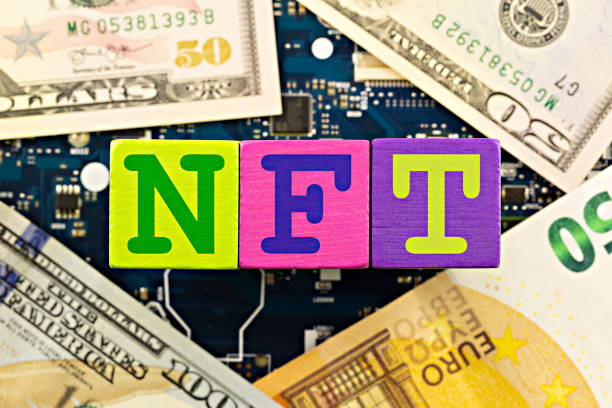
NFTs became a huge buzzword across the internet over the past many times. Artists, gamers, investors, and indeed celebrities jumped into the world of digital collectibles. Some people made millions. Others lost everything in just a few weeks. Most people started to question whether NFTs were still worthwhile in 2024.
Research NFTs to understand their workings and value before investing or ignoring the trend. This companion breaks down the data and helps you decide if NFTs still belong in your digital future.
What Are NFTs?
NFT stands for “Non-Fungible Token.” That sounds complex, but the idea is simple. A commutable point is a commodity you can replace with an equal commodity. For illustration, you can change one bone for another bone. They hold equal value. But “non-fungible” means “unique.” You can not replace it with a commodity differently.
NFTs are digital commemoratives stored on a blockchain. They prove that you enjoy a unique digital point. This could be art, music, a videotape, a tweet, or indeed a digital point inside a game. While anyone can copy an image or song, only one person owns the NFT that proves the true power of the original train.
Think of NFTs like digital instruments of authenticity. They show who created the point, who bought it, and how its value changed over time. This data stays on the blockchain forever.
How Do NFTs Work?
NFTs are enabled using platforms such as Solana, Ethereum, and Polygon to run smart contracts. Once a person generates an NFT, it turns into a unique ID with a digital asset. This asset lives on the blockchain, which keeps track of its power.
You can buy, sell, or trade NFTs on online commerce spots like Open Sea, Rarible, Magic Eden, or Blur. These platforms work like eBay for digital art and collectibles. You use cryptocurrency to complete these trades, most frequently Ethereum.
The proprietor of an NFT can also get royalties when the NFT resells. That gives digital generators a steady slice of income. This point attracted thousands of artists to mint and sell NFTs without mediators.
Why Did NFTs Become So Popular in Technology?

NFTs exploded in popularity for several reasons. Digital artists eventually had a way to sell original work and earn a living online. Collectors rushed in to snare rare pieces, hoping their value would grow. Celebrities and brands joined the hype, launching NFT collections with exclusive gratuities.
Some people used NFTs as digital status symbols. They bought rare incorporations like CryptoPunks or wearied Hams and used them as online individualities. Others joined NFT-grounded communities that offered private access to events, games, or prizes.
Enterprise also played a big part. Numerous people bought NFTs just to flip them at advanced prices. Some made massive gains within days. Media content pushed more people to join, creating fast demand and soaring prices.
What happened to the NFT market?
Like most trends, the NFT smash couldn’t last forever. Prices fell sprucely in 2022 and 2023. Numerous collections lost most of their value. Some NFTs that formerly vended for thousands now trade for a few bones or nothing at all. The request was declined for numerous reasons. Too many low-quality systems swamped the space. Swindles, hairpiece pulls, and fake hype spooked down new buyers.
The crypto crash made people nervous about digital means. Numerous people who joined for quick gains left when they lost Plutocrat. But this crash didn’t kill NFTs. It helped clean the space and remove hype-driven collections. Real generators, serious inventors, and strong communities stayed behind. They now work on systems with real value, use cases, and long-term plans.
Are NFTs Still Worth It?
The answer depends on why you want to buy an NFT. However, NFTs are perilous and frequently not worth it if you want to get rich quickly. Prices move presto, and you may lose, plutocrat. Most hype-driven flips don’t work presently. The request favors quality and tolerance, not fast trading. But if you’re a digital creator or collector, NFTs still hold strong value. They help you prove power, cover imprints, and connect with suckers directly. You can make a community around your art, game, or brand without using third-party platforms.
Numerous new NFT systems offer real gratuities beyond just the image. Some give access to private exchanges, online tools, game particulars, music tracks, and more. These NFTs act like class cards with added benefits. They give you value that goes beyond price maps. NFTs also help in gaming, music, education, and fashion. Big brands test NFTs for event tickets, client prices, and virtual stores. Governments and seminaries explore NFTs for ID cards or warrants. These growing uses may support the coming phase of NFT growth.
What Should You Look for in NFTs Now?

Still, be smart about what you buy if you want to explore NFTs in 2025. Skip hype and concentrate on real value. Look for systems with strong brigades, clear pretensions, and real communities. Join their exchanges and ask questions before you buy anything. Check if the NFTs gives you more than just a picture. Does it offer tools, prices, or access to real events? Does the design have an underlying plan or hookups? Are the generators known and active online? Also, be careful with swindlers.
Never click on unknown links or connect your portmanteau to sketchy websites. Use trusted wallets like MetaMask or Phantom. Store precious NFTs in cold wallets if possible. NFTs aren’t guaranteed investments. Only use plutocrats; you can lose. Suppose you buy NFTs you enjoy long-term, not just those you hope to resell.
Conclusion
NFTs aren’t dead; they just moved beyond the hype. What started as a trend is now turning into a tool with real uses. Digital art, music, gaming, and online identity all benefit from NFTs technology. Big companies and inventors continue to test and improve what NFTs can do.
Numerous NFTs lost value and may now never rise again. Swindles and poor-quality systems still live. But if you move with care, learn the space, and pick quality systems, NFTs can still be worth your time and money. They offer power, community, and creativity in ways we in no way saw ahead. The key is to look past the trend and concentrate on what works. However, gaming or tech if you love digital art.






